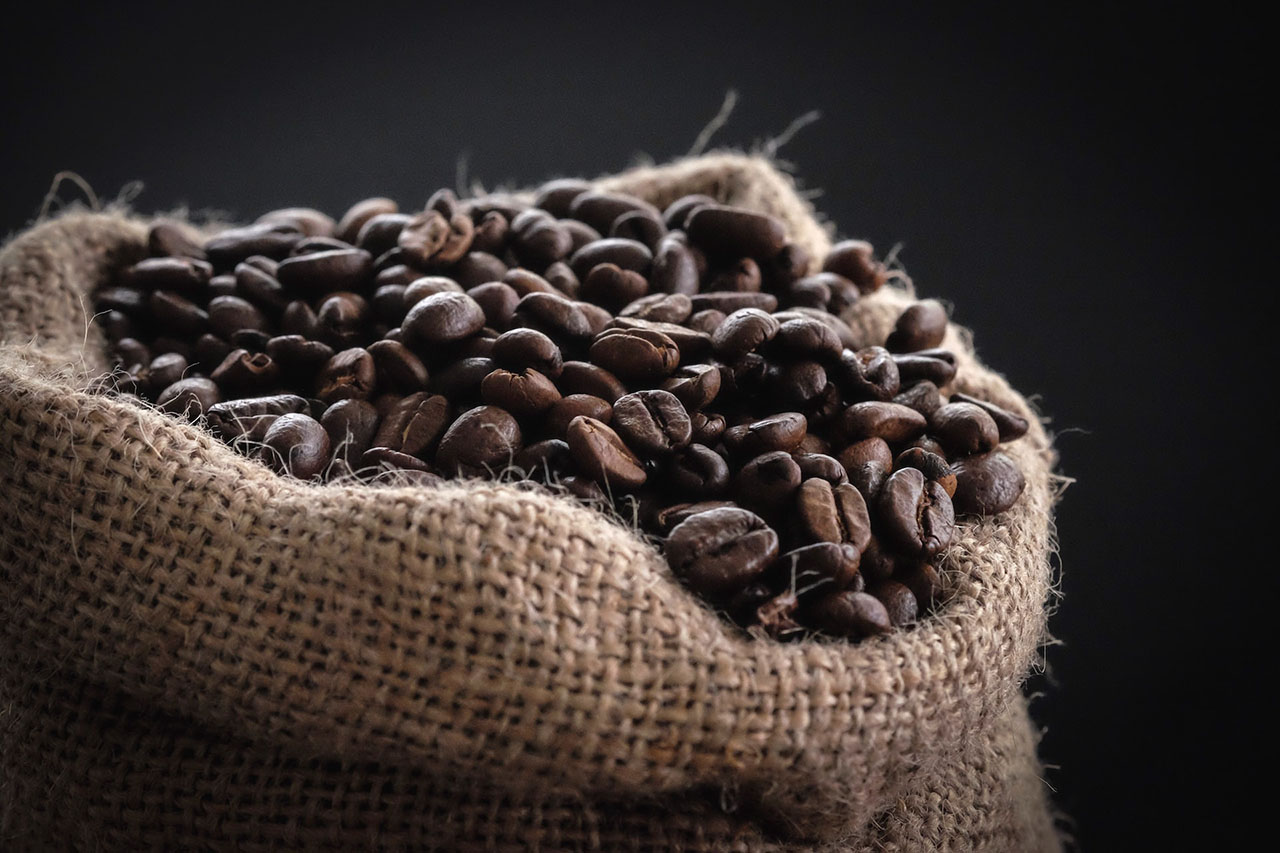Very high-quality coffee beans are cultivated in the Kilimanjaro region, called “Chagga AA”, named after the local tribe. Chagga AA has a very full-bodied flavour and smell, its Arabica pearl beans contain less acid than, for instance, coffee beans from Kenya. Cultivating high-quality coffee requires a lot of care and knowledge. The Arabica plant is very sensitive; it cannot be exposed to strong wind, heat or cold, and needs permeable soils which can hold a lot of water. In most cases, coffee is planted within natural forest vegetation or in combination with other crops for the provision of shade. Banana plants, for instance, can protect sensitive coffee trees from the direct sun due to their large leaves.
When reaching around 15 years, coffee trees provide the highest yield; they can be productive for around 25-40 years. Every tree only yields half a kilo of raw coffee per harvest, requiring a good selection of coffee cherries. Harvesting is always done manually, mostly because the coffee cherries on one branch are usually in different stages of the ripening process. The ripe berries, which are of dark red colour, have to be handpicked. For the harvester, this means checking on and harvesting the same trees every 8-10 days.
After the harvest, for further processing, the pulp surrounding the coffee bean has to be removed, just as the so-called “silver skin” and the parchment, all of which in the coffee cherry have the function of protecting the coffee bean.
In Tanzania, this is done by making use of the “dry process”. The coffee cherries are dried in the sun in large, flat containers and as soon as the bean “rattles” inside the cherry, the cherries are broken making use of a machine. Centrifuges then separate the bean from the unwanted parts. This raw coffee is filled into sacks which are sold at the raw coffee bean auction.
In Moshi during the harvesting season, there is a large weekly auction of raw coffee beans. Even though there is consistent demand for coffee, the price for raw coffee beans, which only make 10% of the end price for consumable coffee, is exposed to strong fluctuations in the world market. This puts at stake the existence of small-scale coffee farmers. An alternative option is “fair trade” coffee, which guarantees a fixed purchase price and purchase quantity to the farmers, independent from the price of raw coffee beans on the world market.
The roasting and final processing only take place in the consumer countries such as the US, Germany or Italy. The right roasting requires time and experience. Using the traditional method of drum roasting, the beans are roasted in a rotating drum over a gas flame. From the colour of the beans, the oven’s smoke and the smell, the roaster notices when the beans have the right degree of roasting. Every delivery of coffee has to be roasted separately, as the beans of every strain and harvest behave differently when being roasted. After the roasting, the hot beans are sieved for small particles and then chilled quickly.
October and March are the months for planting; February, harvesting of plants in lower altitudes; June harvesting of plants in higher altitudes. In December, the plants are in bloom and in February green beans are developing. During these two months, several steps of plant care have to be carried out.

